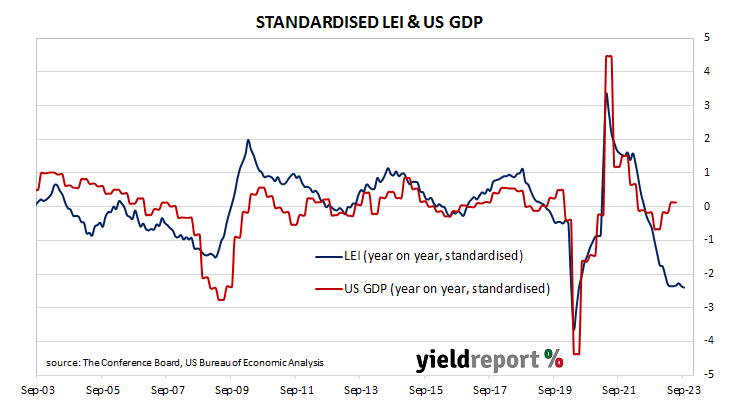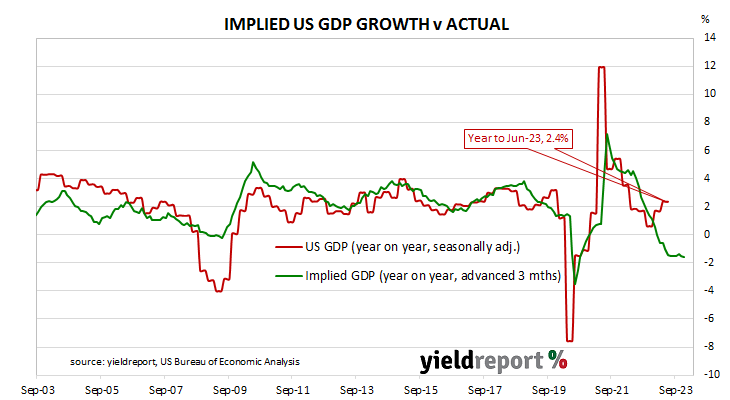Summary: Conference Board leading index down 0.7% in September, lower than expected; nine of index’s ten components negative; short-term US Treasury yields fall, long-term yields rise; rate-cut expectations firm; recession signal not sounded, shallow recession likely in first half of 2024; regression analysis implies 1.6% contraction in year to December.
The Conference Board Leading Economic Index (LEI) is a composite index composed of ten sub-indices which are thought to be sensitive to changes in the US economy. The Conference Board describes it as an index which attempts to signal growth peaks and troughs; turning points in the index have historically occurred prior to changes in aggregate economic activity. Readings from March and April of 2020 signalled “a deep US recession” while subsequent readings indicated the US economy would recover rapidly. More recent readings have implied US GDP growth rates will turn negative sometime in the second half of 2023 or the first half of 2024.
The latest reading of the LEI indicates it decreased by 0.7% in September. The fall was a larger one than the 0.4% decrease which had been generally expected as well as August’s revised figure of -0.5%.
“In September, negative or flat contributions from nine of the index’s ten components more than offset fewer initial claims for unemployment insurance,” said Justyna Zabinska-La Monica of The Conference Board.
Short-term US Treasury bond yields fell on the day while longer-term yields rose. By the close of business, the 2-year Treasury yield had lost 6bps to 5.16%, the 10-year yield had gained 8bps to 4.99% while the 30-year yield finished 11bps higher at 5.11%.
In terms of US Fed policy, expectations of a lower federal funds rate in the next 12 months firmed. At the close of business, contracts implied the effective federal funds rate would average 5.335% in November, 1bp more than the current spot rate, 5.375% in December and 5.405% in January. September 2024 contracts implied 5.03%, 30bps less than the current rate.
“Although the six-month growth rate in the LEI is somewhat less negative, and the recession signal did not sound, it still signals risk of economic weakness ahead,” added Zabinska-La Monica. While noting the “considerable resilience” of the US economy in the face of high inflation and high interest rates, she said “this trend will not be sustained for much longer and a shallow recession is likely in the first half of 2024.”
The Conference Board currently forecasts a “shallow” recession in the first half of 2024. Regression analysis suggests the latest reading implies a -1.6% year-on-year growth rate in December, down from the -1.5% implied by the previous month’s LEI.



